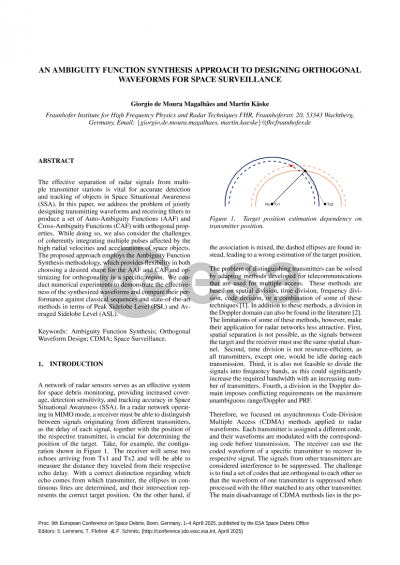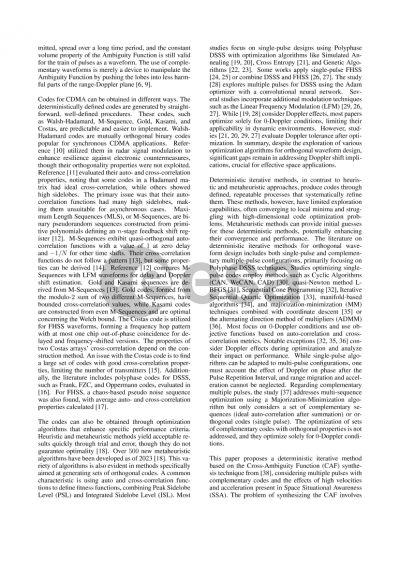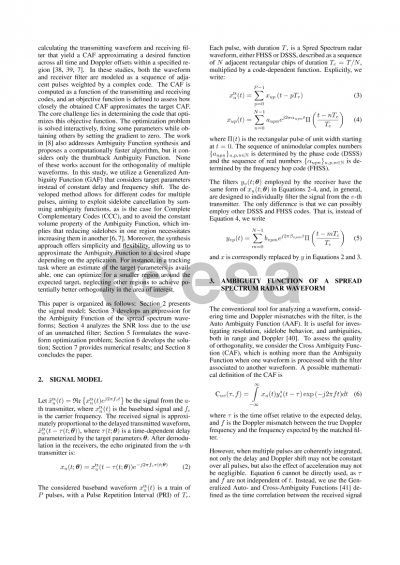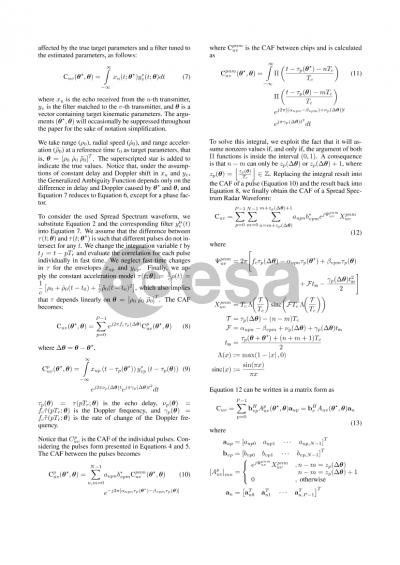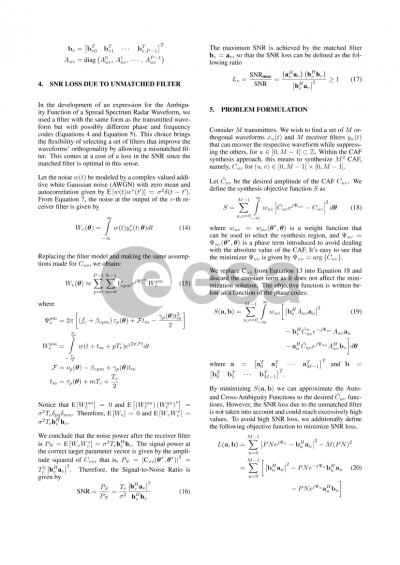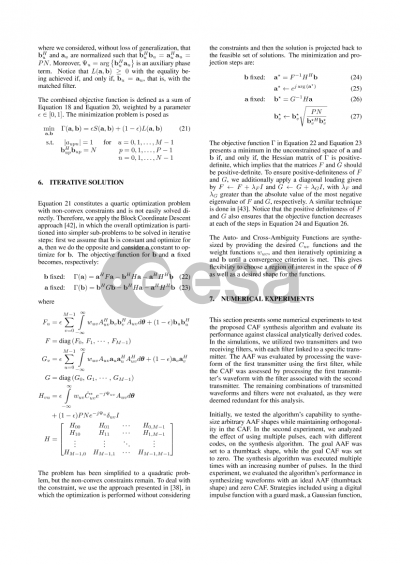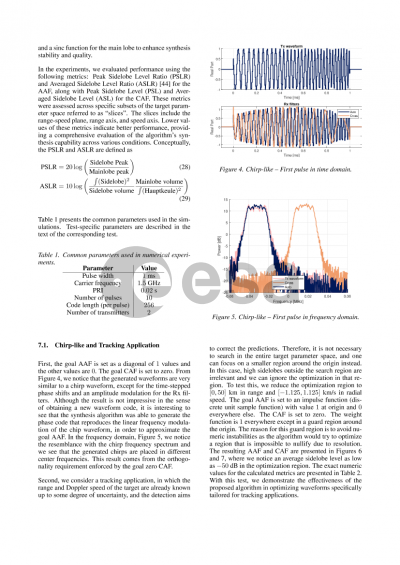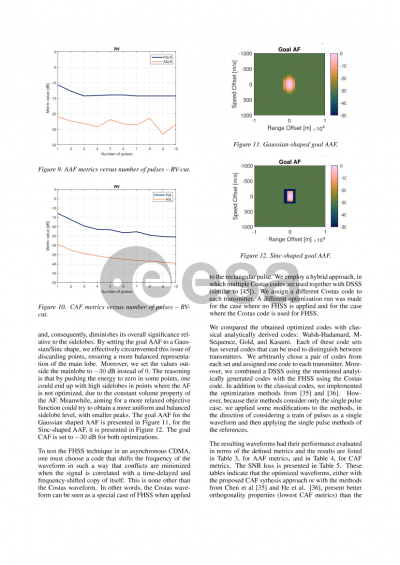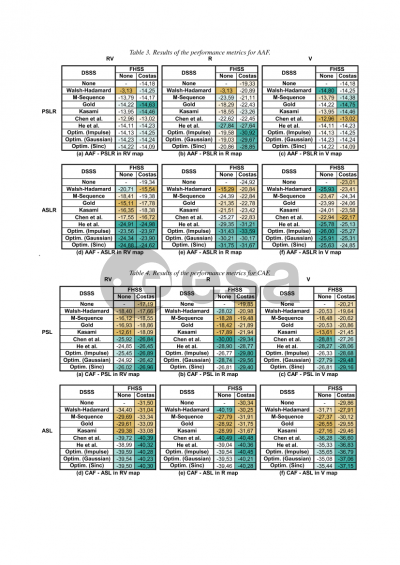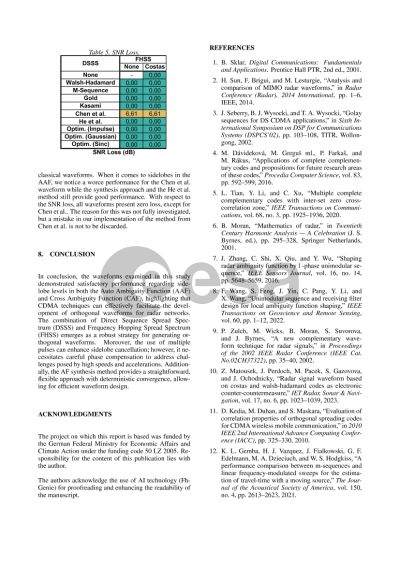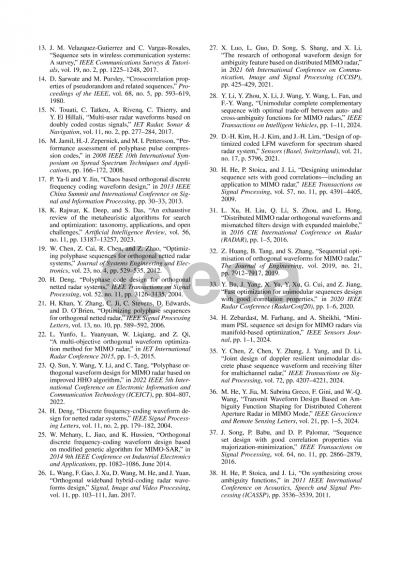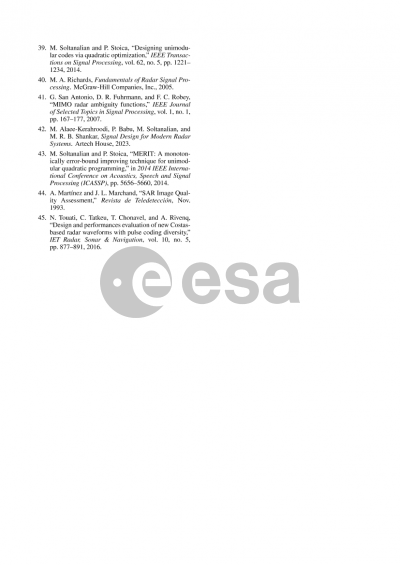Document details
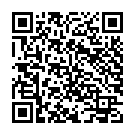
Abstract
A network of radar sensors serves as an effective system for space debris monitoring, providing increased coverage, detection sensitivity, and tracking accuracy in Space Situational Awareness (SSA). A significant challenge in radar networks is the need to distinguish between signals originating from different transmitter stations, as effective parameter estimation also relies on knowledge of the transmitter positions. The Code-Division Multiple Access (CDMA) method using Direct Sequence Spread Spectrum (DSSS) can address this problem. In this technique, each transmitter is assigned a unique spreading code, and the transmitted signal is modulated with this code before transmission. At the receiver, a corresponding filter code is used to demodulate the received signal, allowing for the extraction of the intended transmitter's echo while suppressing interference from others. The effectiveness of the designed waveforms and filters can be evaluated through the Auto-Ambiguity Function (AF) and Cross-Ambiguity Function (CAF). The AF measures how well a signal can be distinguished from time-delayed and frequency-shifted versions of itself, ideally exhibiting a sharp peak at zero delay and Doppler shift. Conversely, the CAF assesses the ability to differentiate between signals from different transmitters and should ideally be zero everywhere. A set of waveforms with ideal AFs and CAFs is considered orthogonal.
The design of orthogonal waveforms benefits from utilizing multiple pulses with complementary codes, since the sidelobes of individual pulses can cancel each other after coherent integration. Additionally, the constant volume property of the ambiguity function implies that improving performance in one area often leads to degradation in another. By employing multiple pulses with different codes, radar systems can better control the shape of the AF and redistribute energy to less harmful regions. However, the coherent integration of multiple pulses is more challenging in SSA due to high Doppler speeds and accelerations of space objects, leading to issues such as range and Doppler migration. The conventional AF and CAF may no longer be applicable. In contrast, the Generalized Ambiguity Function (GAF) provides a more flexible approach by expressing the receiver filter output in terms of target parameters such as range, speed, and acceleration. This allows for a more accurate representation of radar performance in dynamic environments.
In this paper, we jointly design transmitting waveforms and receiving filters to produce a set of orthogonal GAF and CAF using multiple pulses. We develop a mathematical formulation of the GAF for Spread Spectrum Radar Waveforms, incorporating the effects of accelerated targets on multiple pulse waveforms. We apply the Ambiguity Function synthesis approach specifically to orthogonal waveform design, a novel application not fully explored in previous literature. In addition, existing optimization approaches often prioritize specific metrics without the flexibility offered by AF synthesis, which allows for shaping the AF to a desired configuration or targeting specific regions of interest. Lastly, we conduct numerical experiments to demonstrate the effectiveness of the synthesized waveforms and compare their performance against classical sequences and state-of-the-art methods in terms of Peak Sidelobe Level Ratio (PSLR) and Integrated Sidelobe Level Ratio (ISLR).
Preview
